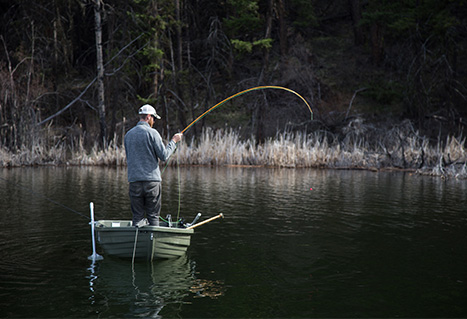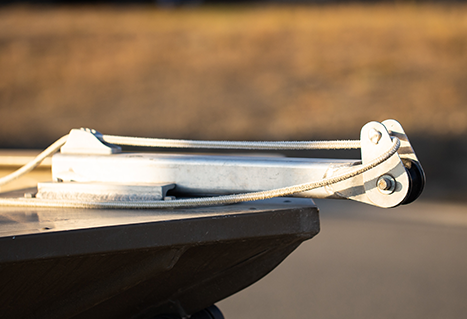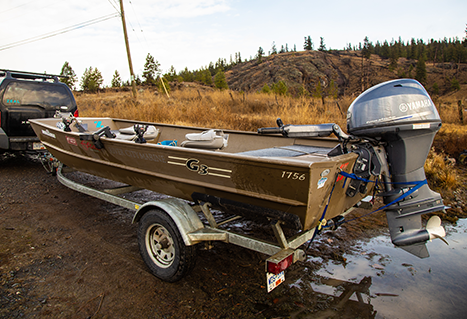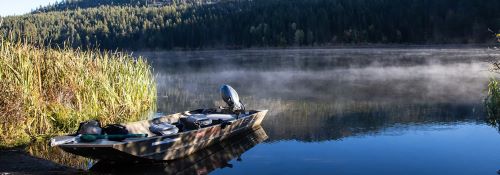Since most stillwaters in our B.C. Interior are surrounded by weeds, along with soft mud bottoms and gradual drop-offs, they are most easily fished from some sort of watercraft (pontoon boats, prams, or flat-bottomed jon boats). Regardless of what style of boat you prefer, outfitting your craft with a few key components will make your experience on the water much more enjoyable.

Pyramid Anchors
Pyramid-style anchors are ideal for stillwater fly-fishing. Ensure that the anchors you are using are sufficiently heavy for your boat – having too light an anchor will result in being blown off your spot on a regular basis. It is always recommended to have both a bow and a stern anchor to properly position your watercraft so it won’t swing around in the wind. When the wind is really blowing, letting out a few extra feet of anchor rope on each end will allow the pyramids to turn sideways and dig into the bottom.
Anchor Rope Locks
While you could just tie your anchor ropes to some part on the inside or outside of your watercraft, anchor rope locks allow you a quick way to adjust the amount of anchor rope out, and then lock it into place, without the inconvenience of untying and retying. There are many styles available on the market, but anything that locks your rope while unattended will work. Having anchor rope locks also allows you to keep the anchors just above the water while slowly moving to another nearby fishing spot.

Padded Seats
Stillwater fishing can mean a full day sitting on your duff. If your watercraft does not allow you to stand or move around, do yourself a favour and get a padded seat that offers comfort and support. If you do not want to drill holes, there are even mounting brackets that will clamp over the bench seats found in some watercraft.
Rod Holders
When fish are feeding on chironomids in deeper water, the takes can often be lightning-fast and powerful. Leaving your fly rod sitting loose in a boat is a sure-fire way for it to find its way to the bottom of a lake. A rod holder will keep your rod secure when unattended, and those with quick-release mechanisms will let you get your rod out in a flash to set the hook.

Fishfinder
There are many effective and reasonably priced fishfinders on the market today. Get a unit with must-have features like seeing the depth and bottom structure below you, reading water surface temperature, and of course, marking fish.
Safety Equipment
For a safe day on the water, ensure that you have a Transport Canada-approved personal floatation device (PFD) for each passenger, and the regulated safety gear aboard your boat. Transport Canada’s Safe Boating Guide is a great resource, providing safety tips and requirements for pleasure craft operators. The minimum safety equipment requirements for motorized craft under six metres (19 feet 8 inches) in length include: PFD for each person on board; buoyant heaving line; manual propelling device (oar or paddle) or anchor with 15+ metres (50+ feet) of rope; bailer or hand pump; sound-signalling device (whistle or horn); waterproof flashlight or three flares; navigation lights if boat is used between sunset and sunrise, or during reduced visibility; magnetic compass; and 5BC fire extinguisher.
Author: Jordan Oelrich
Photos: Jordan Oelrich
Jordan Oelrich is the owner of Interior Fly Fishing Co. When he’s not guiding, Jordan shares his knowledge for fishing as a writer and fly-tying instructor.
